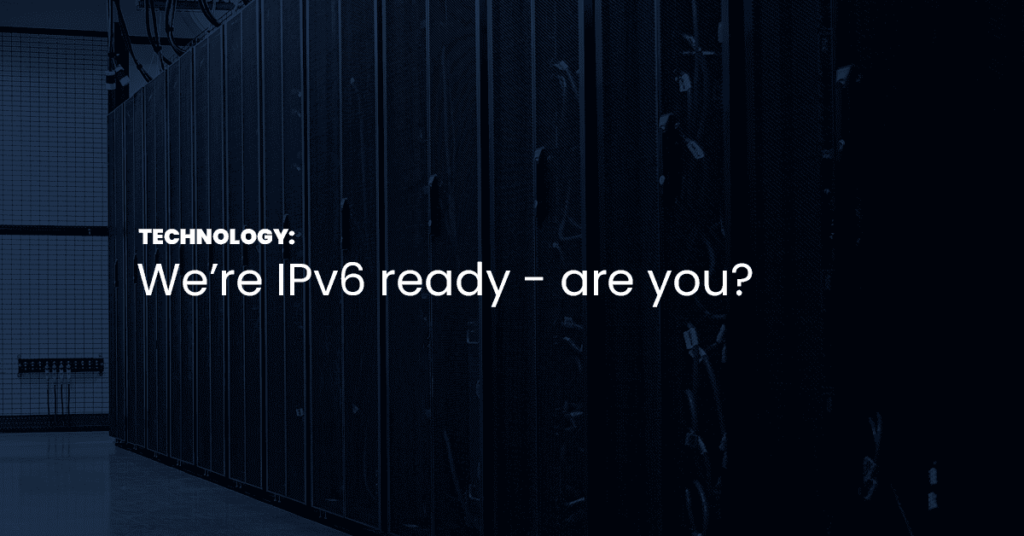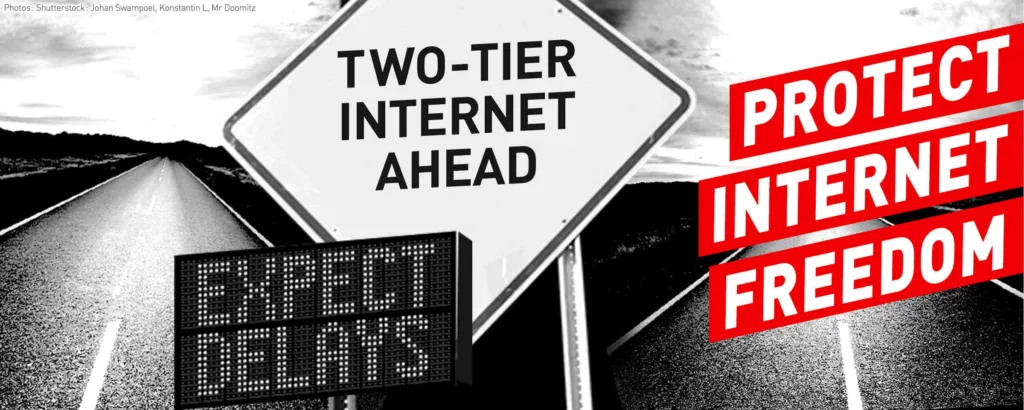IPv6. Three letters and one number have never caused so much fear in the tech world. It actually surprises us how many have yet to implement – nay – refuse to accept IPv6. More concerning, it’s web hosting providers like us – actually, much larger than us – refusing to implement IPv6 like it’s the next MySpace. Truth is, IPv6 is much like USB-C. It’s here, it’s far superior, it’s time to let USB-A, err… IPv4 (we were talking about networking, right?) go and join the relics of computer science past – the Zip drive, Firewire, 56k modems, WiMAX.
IPv6 is the standard now
One of our competitors the other day was asked why their site is inaccessible over IPv6. Curious, we decided to follow the conversation. It turns out, in their own words, “…[IPv4] is the standard…”. Wrong. IPv6 is the standard. IPv4 has had a giant “deprecated” warning across it since 1995. Wait. How was IPv4 deprecated before IANA ran out of addresses? Before Everyone and their dog had a Geocities website? Before MySpace was even a thing? Well, it turns out computer science majors were predicting the explosion of the internet before you probably even received your first 500 free hours from AOL. RFC 1883 set the specification for IPv6. Three years later, the IETF had formalized the IPv6 protocol and then finally it became a standard in 2017 – but first was globally launched on June 6, 2012 when many companies such as Google, Comcast, Time Warner Cable (now Charter/Spectrum), Facebook, and Yahoo among several others, turned on IPv6 access. Every year since, June 6 has been celebrated as World IPv6 Day.
IPv6 is different, but easier

One of the struggles most network engineers have is how to understand IPv6. Private networking? NAT? Where we’re going, we don’t need NAT! NAT was specifically created to help with the shortage of IPv4 addresses. This is why RFC 1918 exists. In case you’re not familiar, this RFC defines private, non-globally routable IPs: 10.0.0.0/8, 172.16.0.0/12, and 192.168.0.0/16. Chances are your home network uses 192.168.0.0/24 or 192.168.1.0/24 and your employer uses 10.something. So if these addresses aren’t routable, how do you get online? The magic of Network Address Translation – NAT! What happens when your device, with the address 192.168.1.152 wants to talk to nodespace.net at, we’ll say, 172.67.223.130? It can’t talk directly so your device talks to your router and then your router knows that this traffic needs to go to the internet. So the router assigns a port number, like 53904 and makes a note of it, and then sends the traffic to 172.67.223.130 on port 443 with it’s own public IP address. So when our web server gets the request, it sees that it should send the reply to your router’s public IP at port 53904. When your router gets the reply, it looks at which device is using port 53904 and then sends the traffic to 192.168.1.152 and you see our website! That’s NAT. With IPv6, we don’t have NAT. Instead, your device has a public IP like 2600:af01:34::43:d2 and talks to your router, your router then sends that traffic to our server at 2606:4700:3034::ac43:df82. Our server sends the traffic back to 2600:af01:34::43:d2 directly.
Did you catch that last part? Our server sends the traffic back directly to your public IPv6 address. Is your computer’s firewall turned on? If not, you better turn it on! Your computer, with IPv6, is directly connected to the internet, like our servers.
Something else that throws people for a loop is that subnetting is a thing of the past. Despite IPv6 also using slash notation (that’s the “/64” or “/29” you may have seen), IPv4 uses subnetting. IPv6 uses prefixes. Both define the network bits of the address. It’s because of that, IPv6 can address devices itself. Kinda cool, right?
IPv6 is now, IPv4 is yesterday
Besides the advantages I mentioned, the fact of the matter is web hosts have to admit that IPv4 is legacy. IPv4 addresses are going through the roof (and you thought gas prices were high… IPv4 address space is now more expensive than ever) and there are some hosts that are going IPv6 primary and IPv4 is optional. Cloudflare has turned on IPv6 by default so that IPv4-only web sites can be accessible over IPv6-only connections.
New ISPs can only get IPv6 addresses and so there are some people in the world who have no access to the IPv4 internet. And in fact, with more devices with cellular connections, mobile network operators have moved to IPv6 as the primary protocol. IPv4 is only there for legacy reasons. Much like how they have shut down 2G and 3G networks, leaving only 4G/LTE and 5G, I suspect that the first devices that will drop IPv4 support will be the mobile networks.
Since IPv6 is now, we’ve been stepping up our transition to IPv6. Our shared hosting & reseller hosting is now IPv6 ready. Every shared hosting account can get a dedicated IPv6 address. With every server getting a /64 of IPv6 space, we have plenty of IPv6 addresses to go around! We’re not going to ever have 18,446,744,073,709,551,616 websites on a single server. How large is this IP space? Well, our friends at Infoblox did the math. If you used 10,000,000 (that’s 10 million) IPv6 address per second and tossed them out and never used them again, it would take you 58,494 YEARS before that address space was exhausted.
We are working on rolling out IPv6 to our VPS customers and all of our dedicated server customers. Right now, we’re on track to have full IPv6 deployment in North Carolina within a year.
If you would like IPv6 enabled for your service, or to get on the notification list for when it’s available, let us know! And if your current host doesn’t support IPv6 yet but you want it, maybe it’s time to switch!


